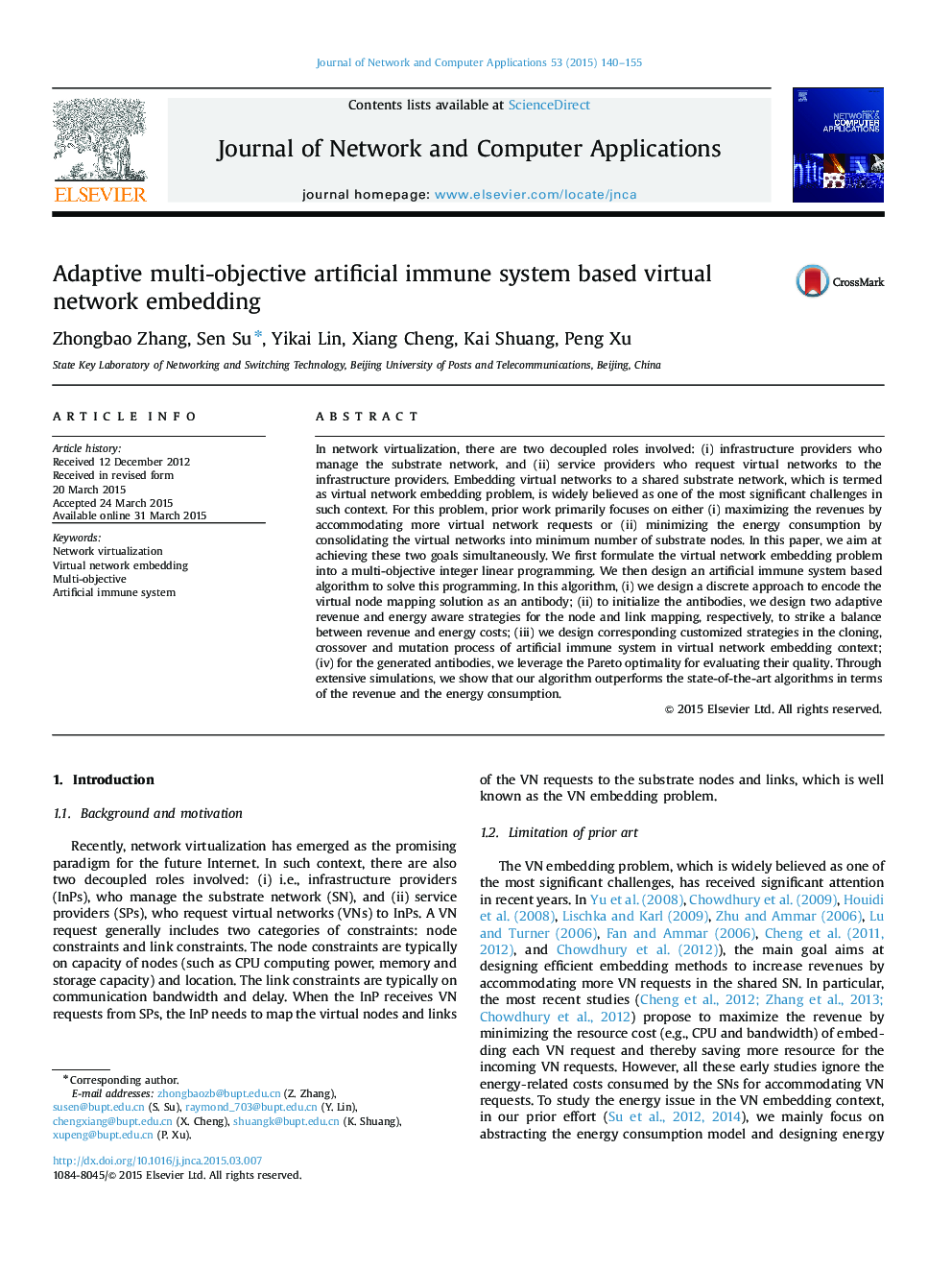| Article ID | Journal | Published Year | Pages | File Type |
|---|---|---|---|---|
| 459509 | Journal of Network and Computer Applications | 2015 | 16 Pages |
In network virtualization, there are two decoupled roles involved: (i) infrastructure providers who manage the substrate network, and (ii) service providers who request virtual networks to the infrastructure providers. Embedding virtual networks to a shared substrate network, which is termed as virtual network embedding problem, is widely believed as one of the most significant challenges in such context. For this problem, prior work primarily focuses on either (i) maximizing the revenues by accommodating more virtual network requests or (ii) minimizing the energy consumption by consolidating the virtual networks into minimum number of substrate nodes. In this paper, we aim at achieving these two goals simultaneously. We first formulate the virtual network embedding problem into a multi-objective integer linear programming. We then design an artificial immune system based algorithm to solve this programming. In this algorithm, (i) we design a discrete approach to encode the virtual node mapping solution as an antibody; (ii) to initialize the antibodies, we design two adaptive revenue and energy aware strategies for the node and link mapping, respectively, to strike a balance between revenue and energy costs; (iii) we design corresponding customized strategies in the cloning, crossover and mutation process of artificial immune system in virtual network embedding context; (iv) for the generated antibodies, we leverage the Pareto optimality for evaluating their quality. Through extensive simulations, we show that our algorithm outperforms the state-of-the-art algorithms in terms of the revenue and the energy consumption.
